Technology
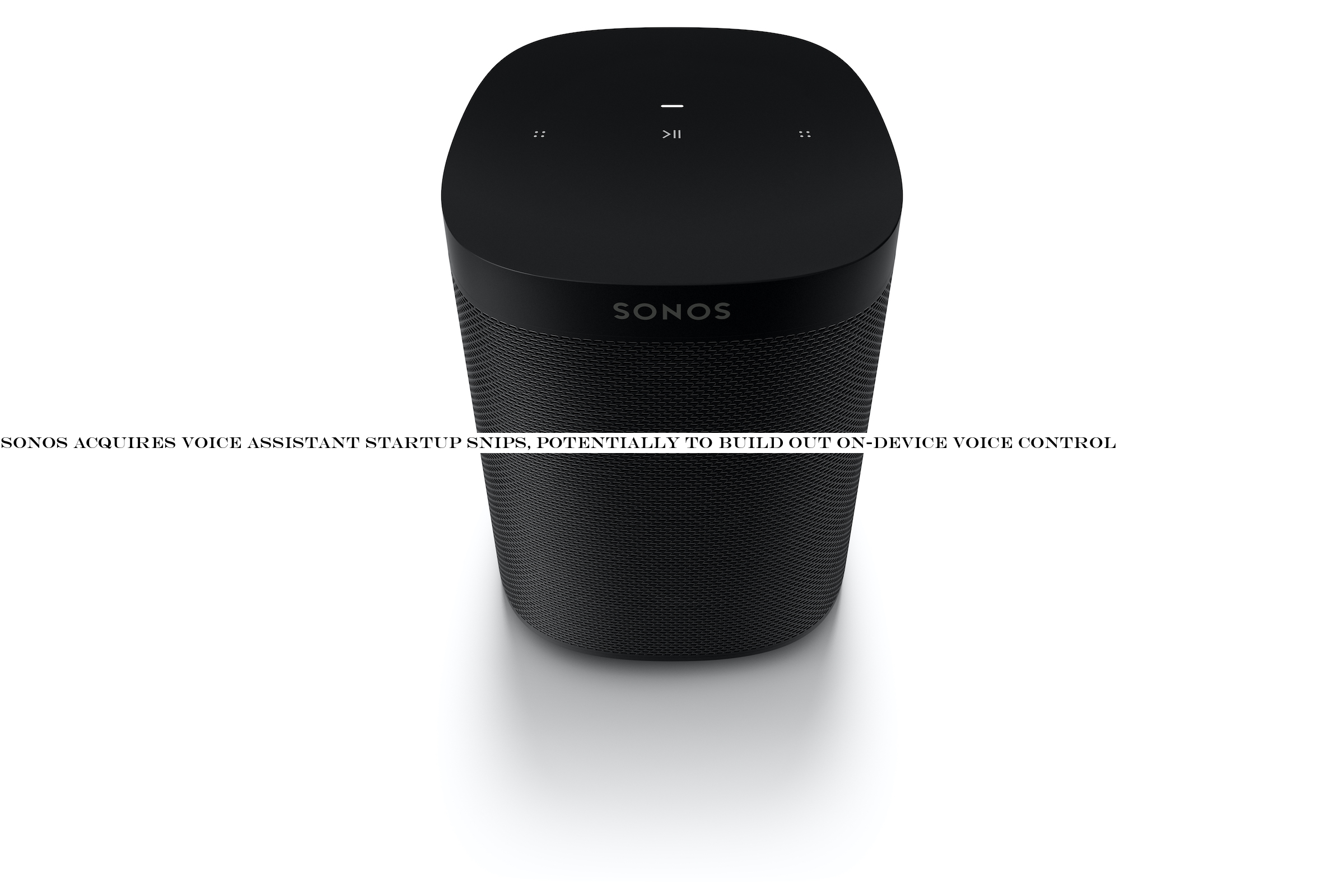
Sonos revealed during its quarterly earnings report that it has acquired voice assistant startup Snips in a $37 million cash deal, Variety reported on Wednesday. Snips, which had been developing dedicated smart device assistants that can operate primarily locally, instead of relying on consistently round-tripping voice data to the cloud, could help Sonos set up a voice control option for its customers that has &privacy in mind& and is focused more narrowly on music control than on being a general-purpose smart assistant.
Sonos has worked with both Amazon and Google and their voice assistants, providing support for either on their more recent products, including the Sonos Beam and Sonos One smart speakers. Both of these require an active cloud connection to work, however, and have received scrutiny from consumers and consumer protection groups recently for how they handle the data they collect from users. They&ve introduced additional controls to help users navigate their own data sharing, but Sonos CEO Patrick Spence noted in an interview with Variety that one of the things the company can do in building its own voice features is developing them &with privacy in mind.&
Notably, Sonos has introduced a version of its Sonos One that leaves out the microphone hardware altogether — the Sonos One SL introduced earlier this fall. The fact that they saw opportunity in a mic-less second version of the Sonos One suggests itlikely there are a decent number of customers who like the option of a product thatnot round-tripping any information with a remote server. Spence also seemed quick to point out that Sonos wouldn&t seek to compete with its voice assistant partners, however, since anything they build will be focused much more specifically on music.
You can imagine how local machine learning would be able to handle commands like skipping, pausing playback and adjusting volume (and maybe an even more advanced feature like playing back a saved playlist), without having to connect to any kind of cloud service. It seems like what Spence envisions is something like that which can provide basic controls, while still allowing the option for a customer to enable one of the more full-featured voice assistants depending on their preference.
Meanwhile, partnerships continue to prove lucrative for Sonos: Its team-up with Ikea resulted in 30,000 speakers sold on launch day, the company also shared alongside its earnings. Thata lot to move in one day, especially in this category.
- Details
- Category: Technology
Apple announced today an expansion of its program designed to get more students coding. The company says it has redesigned the &Everyone Can Code& curriculum with a focus on introducing more elementary and middle school students to coding, while also adding more resources for teachers, a new student guide, and refreshed Swift Coding Club materials. Italso adding thousands of free coding sessions at Apple Stores in December, to celebrate Computer Science Education Week.
The updated curriculum is meant to make coding more approachable, Apple explains, by offering activities that are more closely connected to the students& everyday lives. It also includes a new guide to Swift Playgrounds called Everyone Can Code Puzzles, where students can experiment with concepts and apply their understanding across over 40 hours of activities.
The guide comes with a teacher companion, which includes the solutions, assessment strategies, accessibility resources, and more.
The curriculum is also now optimized for VoiceOver, includes closed-captioned videos, and videos in American Sign Language.
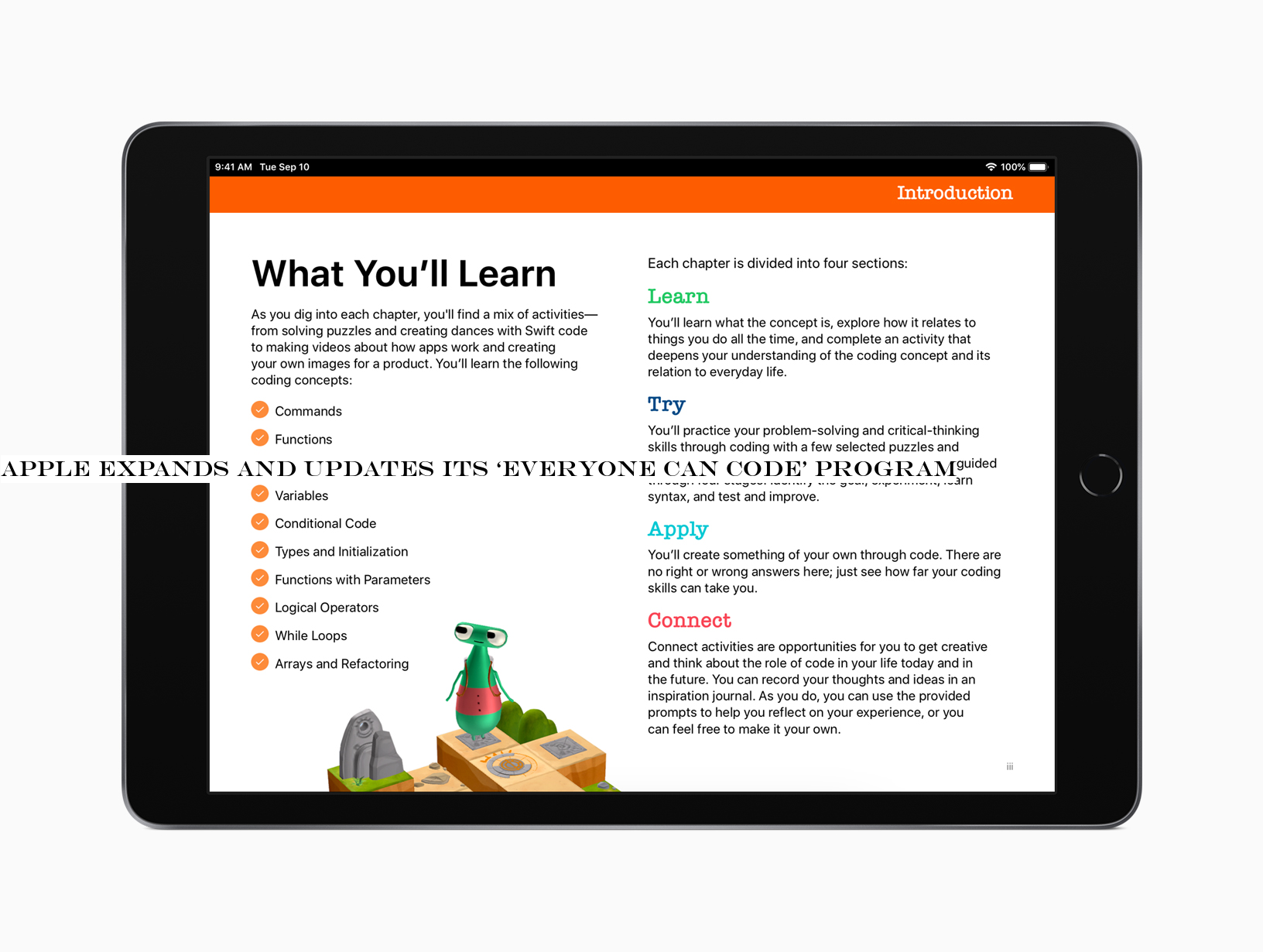
In another expansion, Apple has integrated its Everyone Can Create project guides into the new curriculum. Launched last year on Apple Books, Everyone Can Create has served to get teachers to integrate things like drawing, music, filmmaking and photography into their classroom, by way of Apple technology.
Related this news, Apple says itincreasing the number of Today at Apple coding sessions from December 1 through 15, 2019 in order to celebrate Computer Science Education Week.
The free, interactive sessions are meant to inspire young coders with block-based coding using robots, while more advanced coders use Swift Playgrounds to learn coding concepts or to code an AR project.
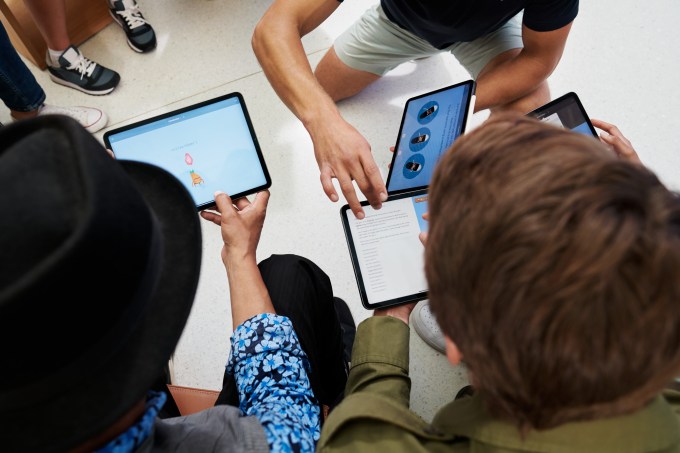
Some stores will also offer preschool-aged coding sessions in the new Coding Lab with Helpsters, the little monsters who star in the new Apple TV+ show, from the makers of Sesame Street. Other sessions will involve Apple Distinguished Educators, Apple Entrepreneur Camp innovators, developers, and artists. ADevelop in Swift curriculum will continue to be available for high school and college students, Apple noted.
And for the seventh consecutive year, Apple will support the Hour of Code with a new Hour of Code Facilitator Guide that will help teachers and parents host sessions using Swift Playgrounds.
- Details
- Category: Technology
Read more: Apple expands and updates its ‘Everyone Can Code’ program
Write comment (91 Comments)PayPal announced today it has agreed to acquire Honey Science Corporation, the makers of a deal-finding browser add-on and mobile application, for $4 billion, mostly cash. The acquisition, which is PayPallargest to date, will give the payments giant a foothold earlier in the customershopping journey. Instead of only competing on the checkout page against credit cards or Apple Pay, for example, PayPal will leap ahead to become a part of the deal discovery process, as well.
Currently, Honey17 million monthly active users take advantage of its suite of money-saving tools to track prices, get alerts, make lists, browse offers and participate in an Ebates-like rewards program called Honey Gold. Its users tend to be younger, millennial shoppers, both male and female.
PayPal aims to add Honeytechnology to its own product line, expanding its reach to PayPal300 million users.
&Whatexciting is that we can take the functionality Honey now offers — which is product discovery, price tracking, offers and loyalty — and build that into the PayPal and Venmo experiences,& explains PayPal SVP of Global Consumer Products and Technology, and former Xoom CEO, John Kunze. &When Honey says they&re putting money in the pockets of their customers — thatperfectly in line with what we want to do. We want to make digital commerce and financial services more affordable, easier to use, more fun and more accessible to people around the world,& he says.
In addition, PayPalnetwork of 24 million merchant partners will gain the ability to offer targeted and more personalized promotions to consumers as a means of acquiring new business and driving increased sales. PayPal Credit may also be integrated into Honey to help finance larger purchases.
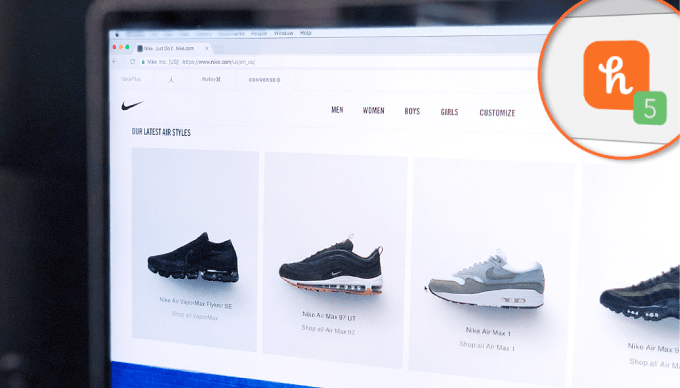
Honey has flown under the radar to some extent since its founding in 2012.
Originally only a web browser extension, Honey tracks sales and retailers& promo codes, as a rival to RetailMeNot and others. What makes the extension so useful is that it automatically tries all the eligible promo codes for you during checkout then selects the one that provided the most savings and applies it on your behalf. This helps shoppers feel more comfortable with their purchases and reduces shopping cart abandonment.
The company also rolled out features to inform shoppers of an itemprice history, including the historical pricing of any product on Amazonmarketplace. In 2017, Honey launched DropList, which would track and alert users to lower prices, as well as tools for finding travel deals.
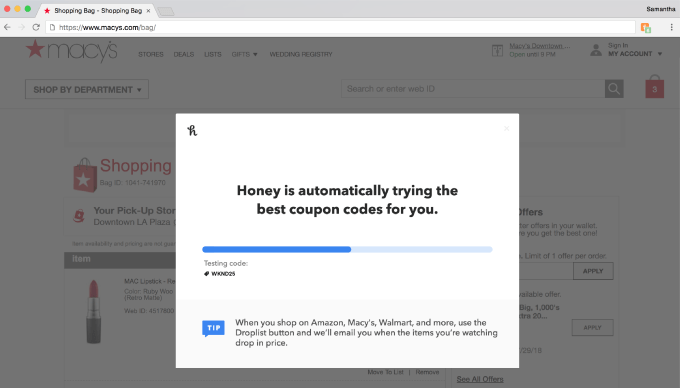
As more consumers shifted their shopping to e-commerce merchants, Honeyuser base also rapidly grew.
Its browser extension now works across approximately 30,000 merchant websites, including fashion, technology, travel and even pizza delivery. Last year, Honey publicly shared that its 10 million members had saved over $800 million using its tools. As of today, Honey17 million members have saved more than $2 billion to date.

&Honey is amongst the most transformative acquisitions in PayPalhistory. It provides a broad portfolio of services to simplify the consumer shopping experience, while at the same time making it more affordable and rewarding,& said Dan Schulman, president and CEO of PayPal, in a statement.
&The combination of Honeycomplementary consumer products with our platform will significantly enhance our ability to drive engagement and play a more meaningful role in the daily lives of our consumers. As a partner of choice for our merchants, this is another way that we can help them build and strengthen their customer relationships, provide personalized offers, and drive incremental sales. The combination of Honey and PayPal adds another significant and meaningful dimension to our two-sided platform,& Schulman added.
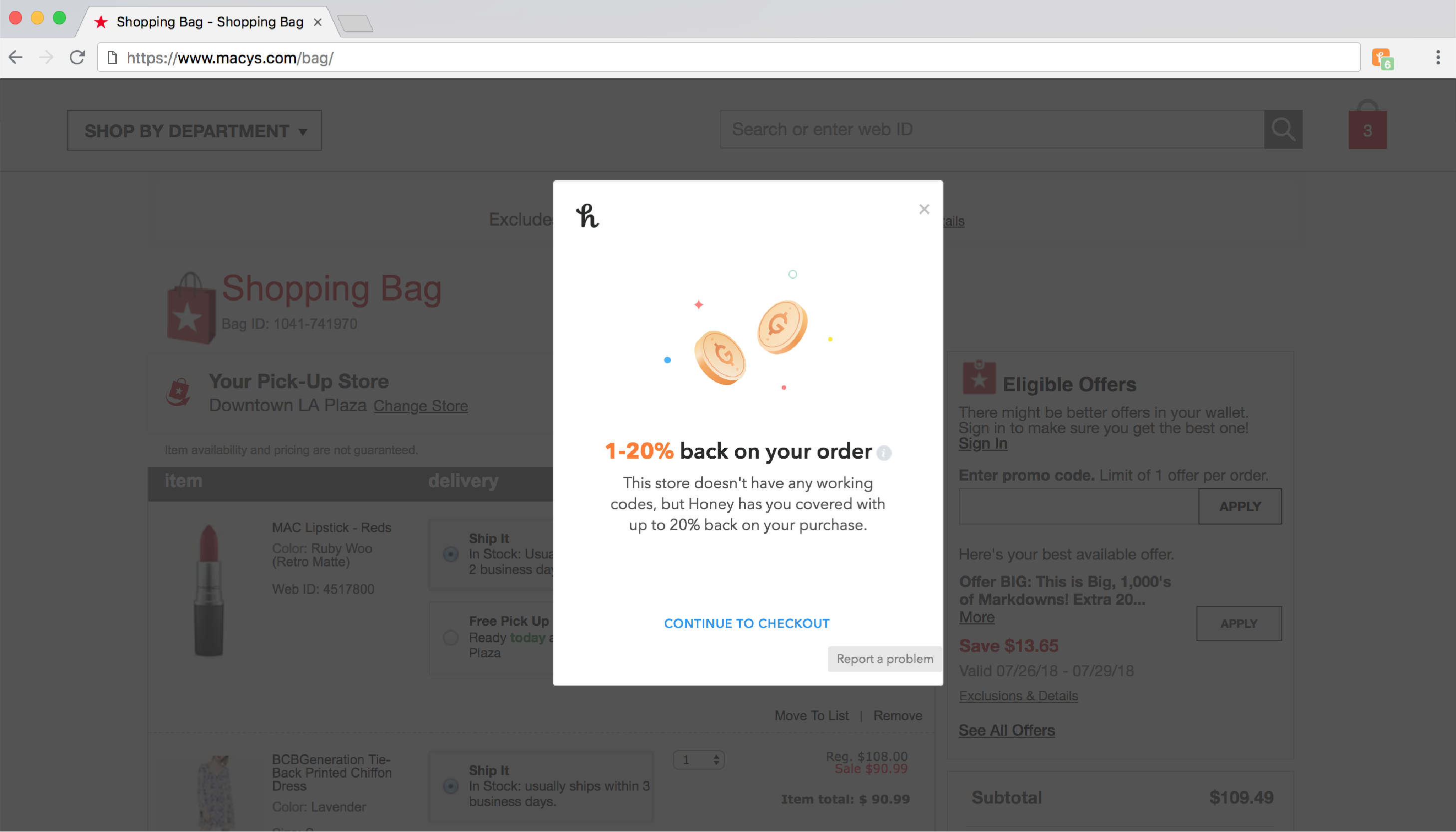
The acquisition also gives PayPal a way to fight back against the increased competition from Apple, Google, Facebook and other tech companies that have entered the payments market in recent years. On AppleQ4 2019 earnings call, for example, CEO Tim Cook noted that Apple Pay has now exceeded PayPal transaction volume with 3 billion transactions in the quarter. Meanwhile, analysts are predicting Facebook Pay has the potential to unseat both Apple Pay and PayPal alike.
Then there are PayPaloriginal rivals — the worldbiggest card networks like Visa, Mastercard, American Express and Discover. These companies are also fighting to remain relevant online, with a new PayPal competitor of their own to simplify online checkout.
With Honey, PayPal immediately shifts the battle away from the checkout page itself to instead compete against all the places people go to discover, browse, get inspired and deal-hunt — whether thatdirectly on retailers& sites or through newer platforms, like Pinterest or Instagram Shopping.
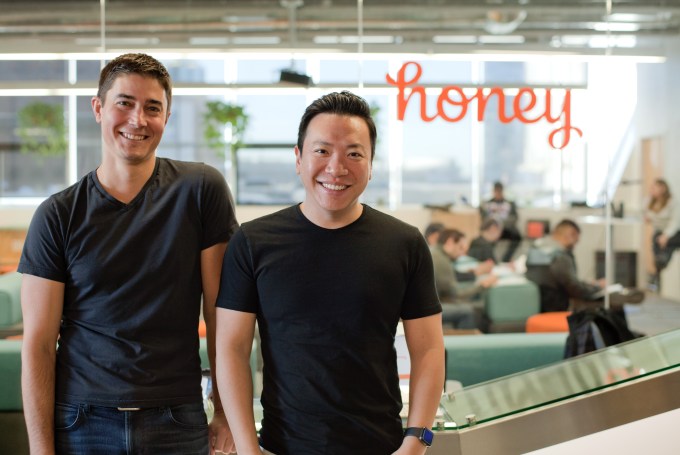
As a result of the acquisition, Honey co-founders George Ruan and Ryan Hudson will join PayPal where they&ll work on product integrations and scaling the technology to a much larger user base. Also joining is Honeypredominantly L.A.-based team of 350 employees.
The Honey team and headquarters will remain in L.A., where they&ve just signed a lease on a new office space with expansion goals in mind.
&Combining PayPalassets and reach with our technology, we can build powerful new online shopping experiences for consumers and merchants,& said Hudson. &We&ll have the ability to help millions of retailers efficiently reach consumers with offers that deliver more and more value to Honey members.&
To date, Honey had raised $49 million from investors, including Ludlow Ventures, Zuma Partners, Mucker Capital, SXE Ventures, BAM Ventures, Plug and Play, Wonder Ventures, Cendana Capital, Anthos Capital and others, according to Crunchbase.
Honey was already profitable on a net income basis in 2018, PayPal notes. The acquisition is expected to close in the first quarter of 2020, subject to regulatory approval. Itexpected to be accretive to PayPalnon-GAAP earnings per share in 2021.
PayPal will hold a conference call at 2 PM PST today to discuss the transaction further.
- Details
- Category: Technology
Read more: PayPal to acquire shopping and rewards platform Honey for $4B
Write comment (91 Comments)Google Cloud today announced the launch of a new bare metal service, dubbed the Bare Metal Solution. We aren&t talking about bare metal servers offered directly by Google Cloud here, though. Instead, we&re talking about a solution that enterprises can use to run their specialized workloads on certified hardware thatco-located in the Google Cloud data centers and directly connect them to Google Cloudsuite of other services. The main workload that makes sense for this kind of setup is databases, Google notes, and specifically Oracle Database.
Bare Metal Solution is, as the name implies, a fully integrated and fully managed solution for setting up this kind of infrastructure. It involves a completely managed hardware infrastructure that includes servers and the rest of the data center facilities like power and cooling; support contracts with Google Cloud and billing are handled through Googlesystems, as well as an SLA. The software thatdeployed on those machines is managed by the customer — not Google.
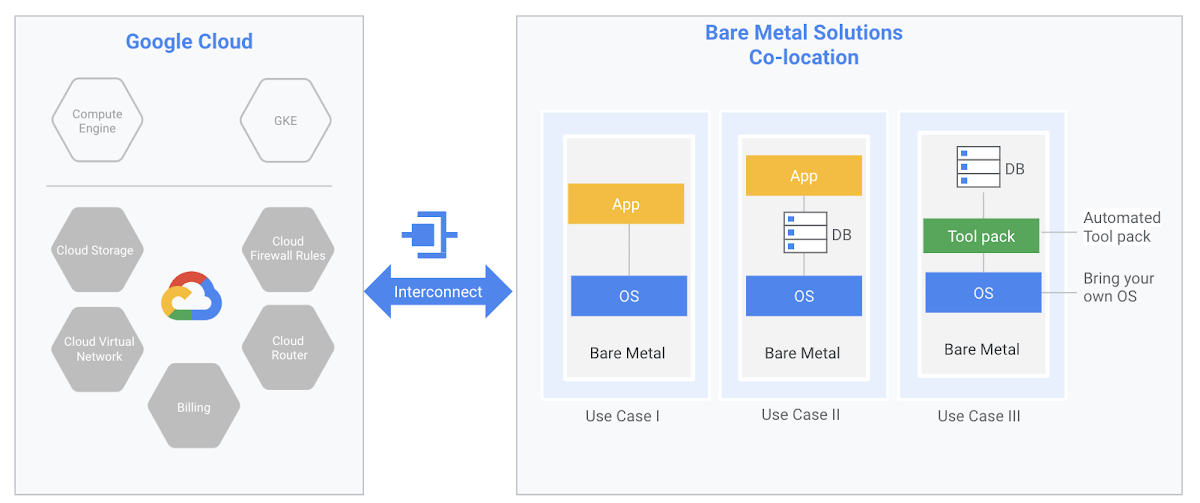
The overall idea, though, is clearly to make it easier for enterprises with specialized workloads that can&t easily be migrated to the cloud to still benefit from the cloud-based services that need access to the data from these systems. Machine learning is an obvious example, but Google also notes that this provides these companies with a bridge to slowly modernize their tech infrastructure in general (where &modernize& tends to mean &move to the cloud&).
&These specialized workloads often require certified hardware and complicated licensing and support agreements,& Google writes. &This solution provides a path to modernize your application infrastructure landscape, while maintaining your existing investments and architecture. With Bare Metal Solution, you can bring your specialized workloads to Google Cloud, allowing you access and integration with GCP services with minimal latency.&
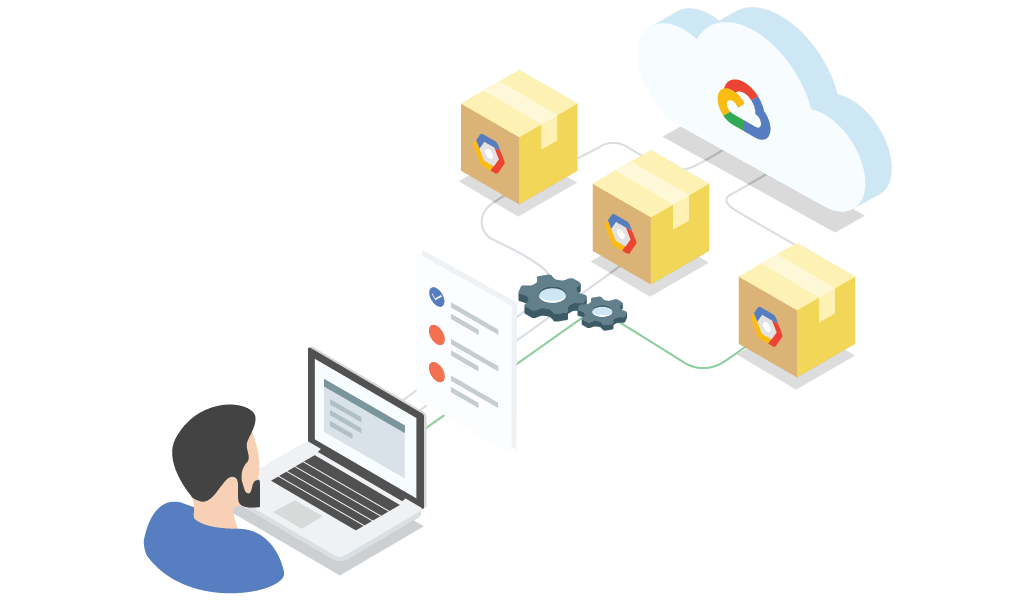
Because this service is co-located with Google Cloud, there are no separate ingress and egress charges for data that moves between Bare Metal Solution and Google Cloud in the same region.
The servers for this solution, which are certified to run a wide range of applications (including Oracle Database) range from dual-socket 16-core systems with 384 GB of RAM to quad-socket servers with 112 cores and 3072 GB of RAM. Pricing is on a monthly basis, with a preferred term length of 36 months.
Obviously, this isn&t the kind of solution that you self-provision, so the only way to get started — and get pricing information — is to talk to Googlesales team. But this is clearly the kind of service that we should expect from Google Cloud, which is heavily focused on providing as many enterprise-ready services as possible.
- Details
- Category: Technology
Read more: Google Cloud launches Bare Metal Solution
Write comment (100 Comments)
Slack makes customer acquisition look easy.
The day we acquired our first Highspot customer, it was raining hard in Seattle. I was on my way to a startup event when I answered my cell phone and our prospect said, &We&re going with Highspot.& Relief, then excitement, hit me harder than the downpour outside. It was a milestone moment & one that came after a long journey of establishing product-market fit, developing a sustainable competitive advantage, and iterating repeatedly based on prospect feedback. In other words, it was anything but easy.
User-first products are driving rapid company growth in an era where individuals discover, adopt, and share software they like throughout their organizations. This is great if you&re a Slack, Shopify, or Dropbox, but what if your company doesn&t fit that profile?
Product-led growth is a strategy that works for the right technologies, but itnot the end-all, be-all for B2B customer acquisition. For sophisticated enterprise software platforms designed to drive company-wide value, such as Marketo, ServiceNow and Workday, that value is realized when the product is adopted en masse by one or more large segments.
If you&re selling broad account value, rather than individual user or team value, acquisition boils down to two things: elevating account based-selling and revolutionizing the inside sales model. Done correctly, you lay a foundation capable of doubling revenue growth year-over-year, 95 percent company-wide retention, and more than 100 percent growth in new customer logos annually. Here are the steps you can take to build a model that realizes on-par results.
Work the account, not the deal
Account-based selling is not a new concept, but the availability of data today changes the game. Advanced analytics enable teams to develop comprehensive and personalized approaches that meet modern customers& heightened expectations. And when 77 percent of business buyers feel that technology has significantly changed how companies should interact with them, you have no choice but to deliver.
Despite the multitude of products created to help sellers be more productive and personal, billions of cookie-cutter emails are still flooding the inboxes of a few decision makers. The market is loud. Competition is cut throat. Itno wonder 40 percent of sales reps say getting a response from a prospect is more difficult than ever before. Even pioneers of sales engagement are recognizing the need for evolution & yesterdayone-size-fits-all approach to outreach only widens the gap between todaysellers and buyers.
Companies must radically change their approach to account-based selling by building trusted relationships over time from the first-touch onward. This requires that your entire sales force & from account development representatives to your head of sales & adds tailored, tangible value at every stage of the journey. Modern buyers don&t want to be sold. They want to be advised. But the majority of companies are still missing the mark, favoring spray-and-pray tactics over personalized guidance.
One reason spamming remains prevalent, despite growing awareness of the need for quality over quantity, is that implementing a tailored approach is hard work. However, companies can make great strides by doing just three things:
- Invest in personalization: Sales reps have quota, and sales leaders carry revenue targets. The pressure is as real as the numbers. But high velocity outreach tactics simply don&t work consistently. New research from Monetate and WBR Research found that 93% of businesses with advanced personalization strategies increased their revenue last year. And while scaling personalization may sound like an oxymoron, we now have artificial intelligence (AI) technology capable of doing just that. Of course, not all AI is created equal, so take the time to discern AI-powered platforms that deliver real value from the imposters. With a little research, you&ll find sales tools that discard rinse-and-repeat prospecting methods in favor of intelligent guidance and actionable analytics.
- Details
- Category: Technology
Read more: Reimagine inside sales to ramp up B2B customer acquisition
Write comment (96 Comments)The Daily Crunch is TechCrunchroundup of our biggest and most important stories. If you&d like to get this delivered to your inbox every day at around 9am Pacific, you can subscribe here.
1. Spotifyfree music service will now stream on Alexa devices, plus Bose and Sonos smart speakers
Spotify has worked with Amazon Echo since 2016, but only for premium subscribers. Today, that changes.
The Alexa support — which includes playing SpotifyTop Hits playlist, Discover Weekly and more — will be available for users in the U.S., Australia and New Zealand. Support for Sonos and Bose is more broadly available to users around the world.
2. Facebooklatest experiment is a meme-creation app, Whale
Currently, the app allows users to decorate photos with text and stickers in order to create memes that can be shared to social media or texted to friends.
3. Vayyar nabs $109M for its &4D& radar tech, which detects and tracks images while preserving privacy
Vayyar is an Israeli startup that builds radar-imaging chips and sensors, as well as the software that reads and interprets the resulting images, for use in automotive and IoT applications.
4. Google Assistant introduces personalized playlists of audio news
When you say &Hey Google, play me the news& to a Google Assistant-enabled phone or smart speaker, you&ll get a tailored playlist of the daybig headlines and stories. Your News Update draws from a variety of publisher partners, focusing on the stories that seem relevant to your interests and your location.
5. Bunch, the Discord for mobile games, raises $3.85M from Supercell, Tencent, Riot Games
Users who download the game can connect with friends and join an audio or video chat with them. From there, users can choose a game to load and the whole party is instantly taken into a multiplayer game session with their friends.
6. Build trust with remote users to get qualitative feedback
As co-founder of a digital health company, Alex Gold had to build a community of test patients. And because of security and privacy concerns, he had to approach this process unconventionally. (Extra Crunch membership required.)
7. 5 reasons you need to be at Disrupt Berlin
We&re one month out from Disrupt Berlin. And no matter which part of the startup ecosystem you inhabit, the event should be a huge opportunity. (I&ll be there!)

- Details
- Category: Technology
Read more: Daily Crunch: Free Spotify comes to Alexa
Write comment (95 Comments)Page 308 of 5614

 20
20